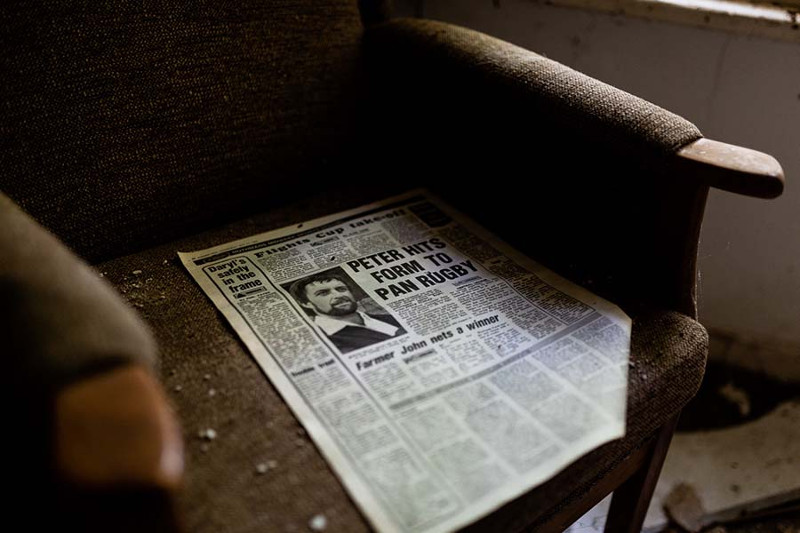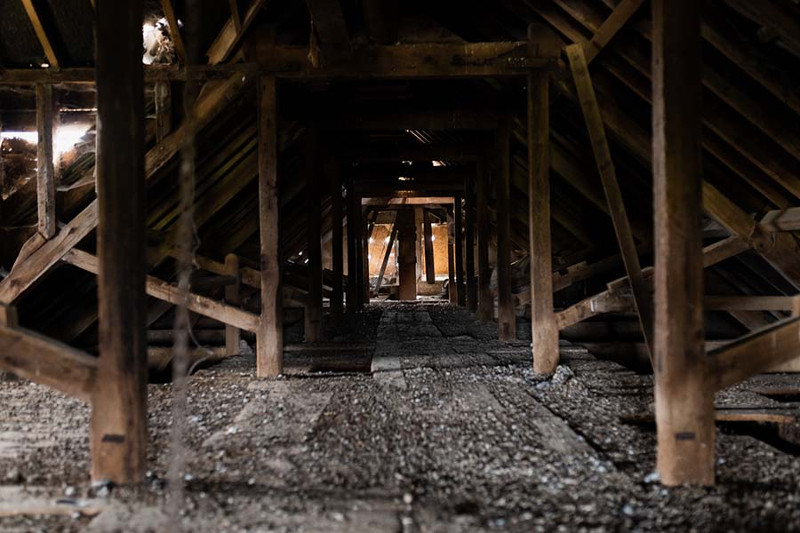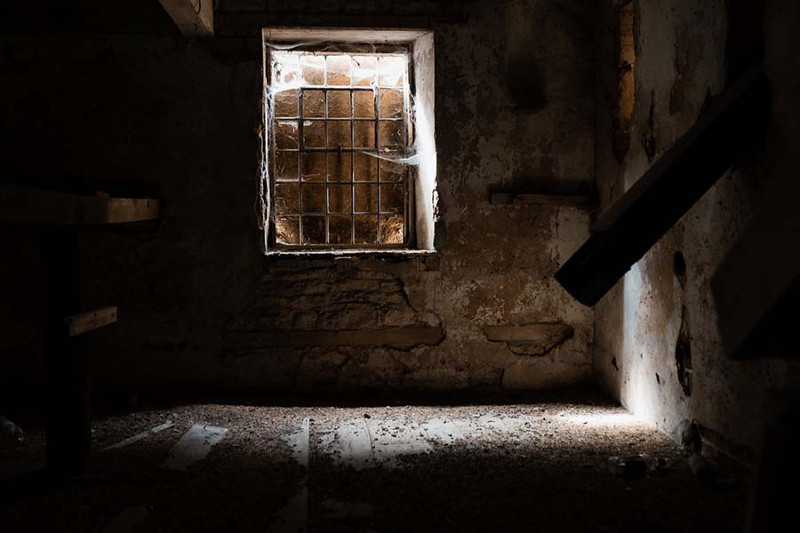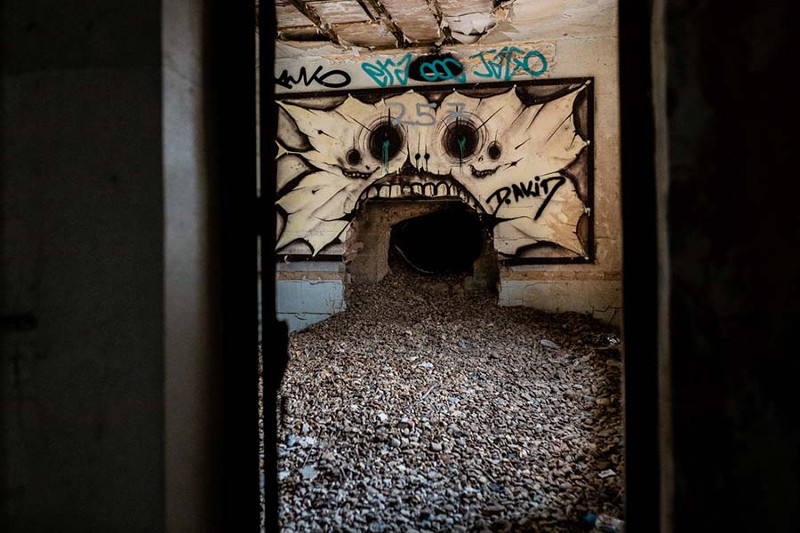Paul David Smith lets you in on a few secrets of one of the most exciting forms of photography – urban exploration

All images by Paul David Smith
Urban exploration, or Urbex as it is commonly known, is the hobby of visiting abandoned buildings and locations to discover and document their history. It often delivers a fascinating journey through time as one learns about a building, understands its historical use and discovers how it came to be abandoned and why it was left too often fall into disrepair.
The practice often receives negative publicity in the media due to several high-profile incidents, such as Dr Bradley Garrett, who in 2012 scaled the Shard in London during its construction. The reality for the majority of urban explorers is quite different from breaking into a high-security building site in the nation’s capital city.
Most of us are visiting sites that have long been abandoned for years. and you are more likely to bump into a friendly dog-walker from a local village than a team of security intent on hauling you before the courts to make an example of you.
With that in mind, here are my top tips for getting started with urban exploration photography.
Safety first – know the law
Don’t go urban exploring alone – this is probably one of the most important tips I could give. Buildings that have been left to the elements will carry a greater risk than those which have been well maintained and you don’t want to find yourself in trouble with nobody around to help. With that said, if you approach every location with caution, do your research first and don’t take unnecessary risks, you’ll not have any problems.
While this is highly unlikely if a location hasn’t been maintained for years, should the landowner turn up and ask you to move on, do so. You are only breaking the law if you refuse to leave; the civil matter of trespass becomes aggravated trespass and the police can then get involved.

Having visited hundreds of buildings, I have met a few landowners over the years; once they know I’m there just to take photographs and not to cause further damage it often changes the tone of the conversation and I often find myself in fascinating conversations with them regarding its history and hearing stories I’d never otherwise have learned about. I’m normally greeted with a response such as, “Oh, I thought you were here to plan an illegal rave”, as happened at an abandoned RAF base in Northamptonshire when thousands of revellers turned up for a weekend-long event.
What gear to take
As with the majority of interior photography, you’ll not have a lot of space, so a wide-angle lens is your friend here. I usually shoot with the Sigma Art 24mm F/1.4 DG HSM – this allows me to capture more of the scene in my images, and the wide aperture helps to isolate subjects and deal with the dark conditions that you usually find yourself walking into due to windows being boarded up and electrics not working.
A lightweight tripod can also be helpful to allow you to shoot with longer shutter speeds in these darker conditions, and a speedlight to further help is a good idea. As with every shoot you go on, don’t forget to take extra batteries and memory cards.
Aside from the photography equipment, you should also consider a sturdy pair of walking boots to protect you from the debris, rubbish and other random objects you’ll find lying around in these buildings. Wear old clothes you don’t mind getting dirty so you can explore without worrying about ruining these and ensure you have a torch with you, again with spare batteries if needed.

Tips and techniques
Urban exploration photography is often about working with pockets of light that are creeping into the building through gaps in the walls, windows or doors. Use these to your advantage and don’t be afraid of the shadows; a subject that is lit in a pocket of light will be more dramatic than an evenly lit room created by pointing your speedlight at the ceiling and bouncing in flash for every shot.
Likewise, don’t be afraid to use a higher ISO – urban exploration photography lends itself well to having a little noise in the image, and it often won’t detract from the end result. I’ll often find myself shooting at 2000-3000 ISO because the layout of the room I’m in doesn’t lend itself well to setting up a tripod.
If you are using flash, you’ll get far greater images by getting the flash off-camera and using directional light to add some drama into the shots.
Location hunting
Finding locations to visit is easier than you think, when I first started looking many years ago I was surprised to learn that there was a huge abandoned RAF base that you could simply walk into and photograph less than 10 miles away from my house.
A simple Google search will usually reveal many locations, try searching: “Urban Exploration [Your County]”.
You’ll get far more results searching for Cambridgeshire for example rather than Peterborough; urban explorers tend to share their finds by county.

There are also many Facebook groups where people are sharing images from their explores, and these can be a great way to find new locations to visit. Simply search the Facebook “Groups” section for urban exploration and you’ll be presented with many.
Lastly, there are two main forums in the UK for urban explorers, these are 28dayslater.co.uk and derelictplaces.co.uk. Both hold a wealth of information on locations for urban explorers. Again, search these forums by county rather than city for the best results.
"Take only pictures, leave only footprints"
I wish everybody involved in urban exploration would abide by this motto. Don’t force your way into buildings, don’t graffiti or tag the walls, don’t vandalise or cause damage to the building, don’t steal anything and just take some amazing photos that you wouldn’t capture anywhere else.
About the Author
Paul David Smith is a professional photographer based in Peterborough, UK. You can see more of his work by visiting his website at Paul David Smith Photography.
Related articles
How to shoot architecture
Photograph wildlife on your doorstep
How to stay creative in a content-heavy world

